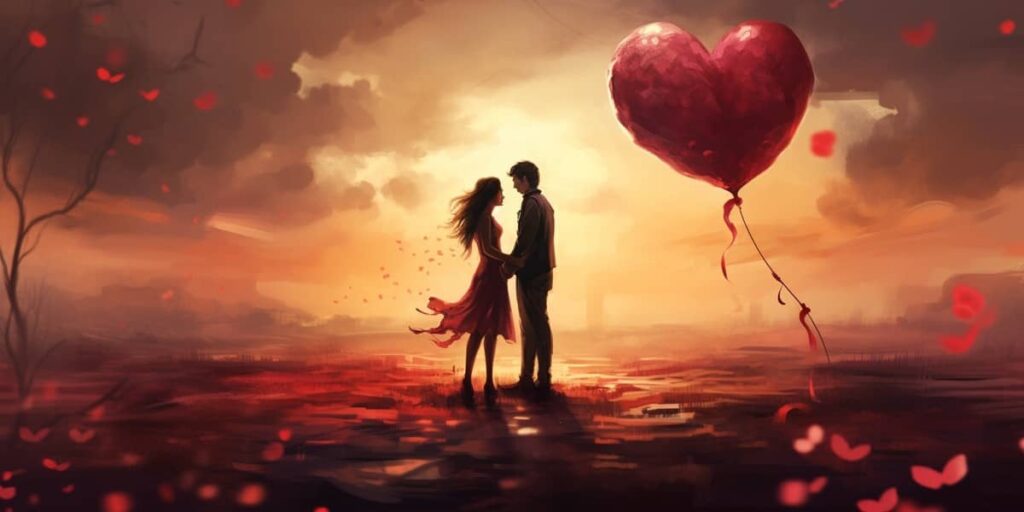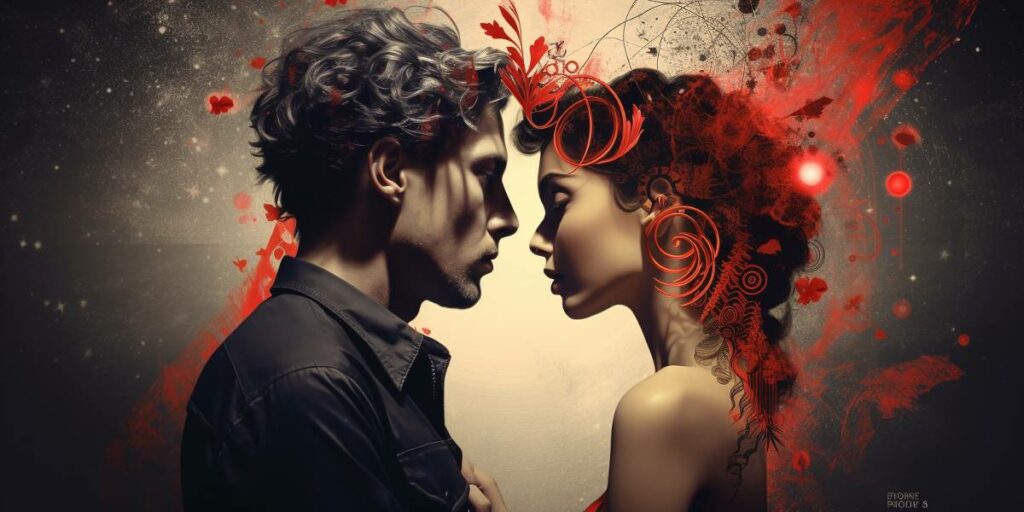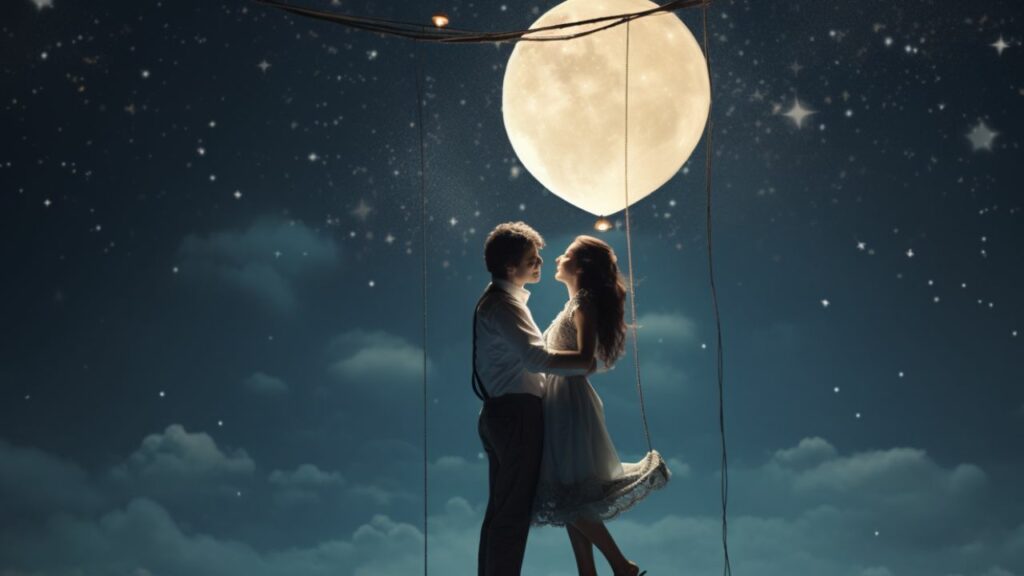When it comes to those romantic feels, I’ve got the scoop. In this fast-paced world of ours, it’s easy to forget about nurturing our relationships and expressing love. And yet, these feelings are a crucial part of human connection. They’re the glue that binds us together, creates serious sparks, and fuels deep emotional bonds.
Often we associate romantic feelings with days like Valentine’s Day or anniversaries. But really, they’re applicable every day of our lives. Whether you’re in a long-term relationship or just starting out with someone new, understanding your romantic emotions can make all the difference.
Now let’s dive into what makes up these romantic feels. From heart-fluttering excitement to quiet moments of intimacy; from passionate declarations to simple acts of kindness – romance is an intricate web that we’ll unravel together in this article.
Understanding the Concept of Romantic Feels
Diving headfirst into the realm of romance, it’s impossible not to encounter that all-encompassing term: “romantic feels”. But what exactly does this mean? Let’s break it down.
At its core, “romantic feels” refers to the complex emotions associated with love and romantic attraction. It’s more than just a flutter in your stomach or a quickened heartbeat. We’re talking about deep emotional bonds that form when you start developing feelings for someone special.
Now, I’m sure you’re thinking, “That sounds nice, but how do I know if what I’m feeling is ‘romantic feels’?” Good question. Recognizing these feelings can be tricky since they often overlap with other types of emotions like friendship or familial love. However, there are some telltale signs:
- You might find yourself constantly thinking about this person.
- Their happiness becomes incredibly important to you; sometimes even more than your own.
- Physical intimacy may become desirable – holding hands, hugging, kissing.
- You could feel a sense of longing when they’re not around.
Keep in mind though; everyone experiences these feels differently. For some, it’s an intense whirlwind sensation while for others it could be a slow-burning ember. This diversity is part of what makes the concept so intriguing and relatable.
But let’s not forget that romantic feels don’t exist in isolation – they interact with other elements of our lives too! Factors such as cultural norms and personal histories can influence how we perceive and express these feelings. A study by Hatfield & Rapson (1993) divided romantic love into two categories: passionate love (intense longing for union with another) and companionate love (affection felt between those who spend their lives together).
| Type | Definition |
|---|---|
| Passionate Love | Intense longing for union with another |
| Companionate Love | Affection felt between those who spend their lives together |
This framework, while not exhaustive, offers a handy starting point for understanding the multifaceted nature of romantic feels.
So there you have it – a glimpse into the world of romantic feels. It’s complex, it’s nuanced and yes, it can be quite confusing at times. But isn’t that what makes it all so beautifully human?
Decoding the Language of Love: What are Romantic Feels?
When we talk about romance and love, it’s often referred to as a language. I’ve always found that fascinating because, in truth, love does have its own unique dialect. It speaks through actions, words, gestures, and yes – feelings. These feelings are what we commonly refer to as ‘romantic feels’.
So let’s seek to understand this language better. Romantic feels can be seen as those warm sensations you experience when you’re with someone who stokes the fire in your heart. They’re the butterflies that flutter in your stomach during a first date or the racing heartbeat when your loved one walks into a room.
Here’s something interesting I stumbled upon while researching on the subject: an American study conducted back in 2015 revealed that 88% of participants associated these romantic feels with physical sensations such as increased heart rate and tingling skin!
| Year | Study | Findings |
|---|---|---|
| 2015 | American Study | 88% associate romantic feels with physical sensations |
And it doesn’t stop there either; these feelings also translate into emotional responses. We’re talking about those sentiments of happiness and contentment whenever you’re around your special someone. Or even those moments of anxiety when they’re not by your side – all part and parcel of this complex yet beautiful thing called love.
But here’s an important note – romantic feels aren’t just limited to new relationships or early stages of dating. They evolve over time! As couples grow more comfortable with each other, these initial intense emotions may mellow down but they transform into deeper sentiments like trust, security and unconditional love.
Now if you thought understanding human psychology was tough, decoding the language of love is no less challenging! But isn’t it worth understanding something so integral to our lives? After all, we’re hardwired for connection and intimacy – and romantic feels are the heartbeat of these connections.
So there you have it, a sneak peek into the language of love! We’ve only just scratched the surface though – there’s so much more to explore and understand!
The Science Behind Feeling Romantic
Ever wondered why we feel a flutter in our heart when we meet someone special? It’s not just your imagination; there’s actual science behind these romantic feels. Let me guide you through the fascinating world of love chemistry!
Our brains are the key players here. When you’re attracted to someone, your brain releases chemicals like dopamine and oxytocin, which make you feel happy and bonded to that person. Dopamine is responsible for that rush of euphoria, while oxytocin promotes feelings of trust and attachment.
Interestingly, researchers at Rutgers University found some striking similarities between people in love and those on certain drugs. Brain scans revealed that the same regions light up! Here’s how they break down:
| Area Of Brain | Functions |
|---|---|
| Ventral Tegmental Area (VTA) | Produces dopamine |
| Caudate Nucleus | Processes reward signals |
These findings suggest that being in love might be akin to addiction – but don’t worry, it’s all part of nature’s design to keep us together!
But it’s not just about chemicals; our hearts play a role too. Ever heard of your heart skipping a beat when you see your beloved? That’s because adrenaline levels increase when we’re around someone we find attractive – leading to increased heart rate and breathlessness.
So next time you feel those butterflies in your stomach or can’t stop thinking about that certain someone, remember this: it’s all part of the intricate dance between your body and mind spurred by one powerful thing – romance!
Influence of Culture on Our Perception of Romance
Isn’t it fascinating how our cultural backgrounds can shape the way we understand and express love? Cultural norms, traditions, and societal expectations play a significant role in shaping our romantic experiences. They’re like invisible hands, guiding us through the labyrinth of love.
Let’s take a look at Japan, for instance. Here, public displays of affection are often frowned upon. It’s not uncommon to see couples refraining from holding hands or kissing in public. The Japanese culture values privacy and restraint when it comes to expressing personal emotions. This doesn’t mean that Japanese individuals don’t feel or express romance – they just do it differently than what we might be used to seeing in Western media.
Contrast this with Latin American cultures where passion and expressive romance are deeply ingrained into everyday life. You’ll often see couples openly expressing their affection for each other – hugging, kissing, holding hands – these actions are commonplace and widely accepted.
It’s also essential to acknowledge the influence of pop culture on our perception of romance. From Bollywood films showcasing grand romantic gestures to Hollywood movies promoting the idea of ‘happily ever after’, media plays an integral role in shaping our ideas about love and relationships.
Let’s consider some statistics:
| Media | Percentage Influencing Romantic Perceptions |
|---|---|
| Movies | 60% |
| Books | 20% |
| Music | 15% |
| Social Media | 5% |
These figures demonstrate how significantly different forms of media affect our understanding of romance.
In conclusion (without starting with “In conclusion,”), cultural nuances shape our perceptions about love more than we may realize. Whether you’re from Tokyo or Buenos Aires, New York City or Mumbai – your cultural background will inevitably color your romantic experiences; crafting unique stories that make up the universal tale of human connection.
Literary Interpretations: How Writers Portray Romantic Feels
I’ve always been captivated by the way writers can tap into their imagination and create scenes that make us feel the essence of romance. It’s like they have a secret recipe, mixing in just the right amount of emotion, setting, and dialogue to create a perfect romantic scene that stays with us long after we’ve turned the last page.
One thing I’ve noticed is that there isn’t one definitive way to portray romantic feels. Some authors choose to focus on pure passion and physical attraction, while others delve deep into emotional connection and intellectual compatibility. For instance, Nicholas Sparks’ novels often revolve around grand gestures and epic love stories that defy all odds. On the other hand, Jane Austen’s works emphasize character development and emotional depth over passionate displays.
Let’s not forget about poetry! Poets have an uncanny knack for distilling complex emotions into just a few beautifully crafted lines. Take Rumi for example; his poems are steeped in spiritual love that transcends physical boundaries creating an ethereal experience for readers. It’s fascinating how different literary forms provide varied interpretations of romantic feels.
The setting plays an important role too. A moonlit beach or a bustling city can set the mood for romance in contrasting ways — showing how versatile writers can be when it comes to portraying love. Let’s look at some examples:
- F.Scott Fitzgerald uses 1920s New York City as a backdrop in ‘The Great Gatsby’. In this context, he explores a more tragic side of love amidst materialistic pursuits.
- Emily Bronte’s ‘Wuthering Heights’ on contrary is set against Yorkshire moors where wild landscapes mirror tumultuous passions between characters.
Lastly, I’ll touch upon symbolism which is another tool frequently employed by writers to depict romance subtly yet effectively. Symbols like red roses or even rain can represent various facets of love from passion to purity or even renewal.
In conclusion, the portrayal of romantic feels in literature is as diverse and complex as love itself. As readers, we get a glimpse into these different interpretations, gaining a broader perspective on what romance can encompass.
How to Communicate Your Romantic Feelings Effectively
Expressing your feelings is never a walk in the park. Especially when those emotions are related to love and romance, it can feel like you’re walking on eggshells. But don’t worry, I’ve got some tips that’ll help you navigate this tricky territory.
First off, it’s crucial to be honest with yourself about what you’re feeling. If you’re not sure what’s going on inside your own heart, how can you expect someone else to understand? So take some time for self-reflection. Identify your feelings and embrace them – because they are yours, after all!
Now let me share something important : Honesty is key when communicating romantic feelings. It doesn’t mean spilling every single thought that crosses your mind, but rather being true about what’s in your heart. You see, authenticity speaks volumes in matters of the heart.
I bet we’ve all heard the phrase “Actions speak louder than words.” Well guess what? It applies perfectly here too! Show your feelings through actions as well as words. Small gestures of kindness or caring go a long way in expressing how much someone means to you.
And lastly but importantly: Timing is everything! It’s essential not to rush things or pressure the other person into reciprocating your feelings immediately. Everyone processes emotions at their own pace – so give them the space they need.
To sum up:
- Be honest with yourself
- Share from an authentic place
- Express affection through actions
- Respect timing and personal space
Master these points and I guarantee you’ll find it easier to communicate those butterflies fluttering around inside!
Navigating through the Complexity of Modern-Day Romance
I’ve seen it, you’ve probably felt it – romance isn’t what it used to be. The digital age has turned the world of dating upside down with its slew of apps and websites designed to bring people together. Yet, as convenient as these platforms may be, they’ve also led to a whole new set of complications.
Let’s talk numbers. According to Pew Research Center data from 2020:
| Age Group | % Used Dating Site/App |
|---|---|
| 18-29 | 48% |
| 30-49 | 38% |
As evident from the table above, nearly half of all young adults have used an online platform for dating, and that number doesn’t seem to be decreasing anytime soon.
At first glance, this modern way of finding love might seem like a godsend. It’s easy! You just swipe right or left based on someone’s profile picture, maybe read their bio if you’re feeling particularly thorough. But here’s where things start getting intricate:
- People often feel overwhelmed by choice.
- Online interaction lacks the nuances that face-to-face communication provides.
- There is potential for deception in online profiles.
These factors can make online dating a complex maze rather than a straightforward path towards romantic bliss.
Yet I’m not saying we should throw technology out the window and revert back to old-school courtship rituals (though some might argue that wouldn’t be such a bad idea!). Instead, I believe we need better guidance when navigating our way through this modern-day labyrinth of love.
So what could help? Well…
- Clear communication: stating your intentions upfront can save both parties from unnecessary heartbreak.
- Patience: Rome wasn’t built in a day and neither is a meaningful relationship.
- Authenticity: Be yourself – everyone else is already taken!
To sum up this section, the world of modern romance can be complex. But with a little patience, authenticity, and clear communication, we can all find our way through it. After all, love is worth the journey!
Conclusion: Embracing and Understanding Your Own Romantic Feels
Unraveling the complex web of emotions we call “romantic feels” isn’t an easy task. Yet, it’s a journey worth embarking on for a deeper understanding of ourselves. In my exploration of this topic, I’ve learned that each person experiences these feelings differently.
Our romantic feels are as unique as our fingerprints. They’re influenced by our backgrounds, personalities, and past relationships. It’s important to remember there’s no right or wrong way to feel about love.
One thing I’ve noticed is that recognizing your own patterns can be beneficial in navigating romantic situations more effectively. By doing so, you’ll gain a better grasp of what makes you tick romantically. You’ll start noticing trends in your emotional responses and behavior which may help improve your relationship dynamics.
Here’s what you should keep in mind:
- Acceptance is key: Understand that your emotions are valid.
- Self-awareness helps: Recognize what triggers specific reactions in you.
- Communication matters: Share your feelings with your partner openly.
In conclusion, embracing and understanding our own romantic feels can pave the way for healthier and happier relationships. So let’s take time to explore them and grow from what we discover along the path of love!



